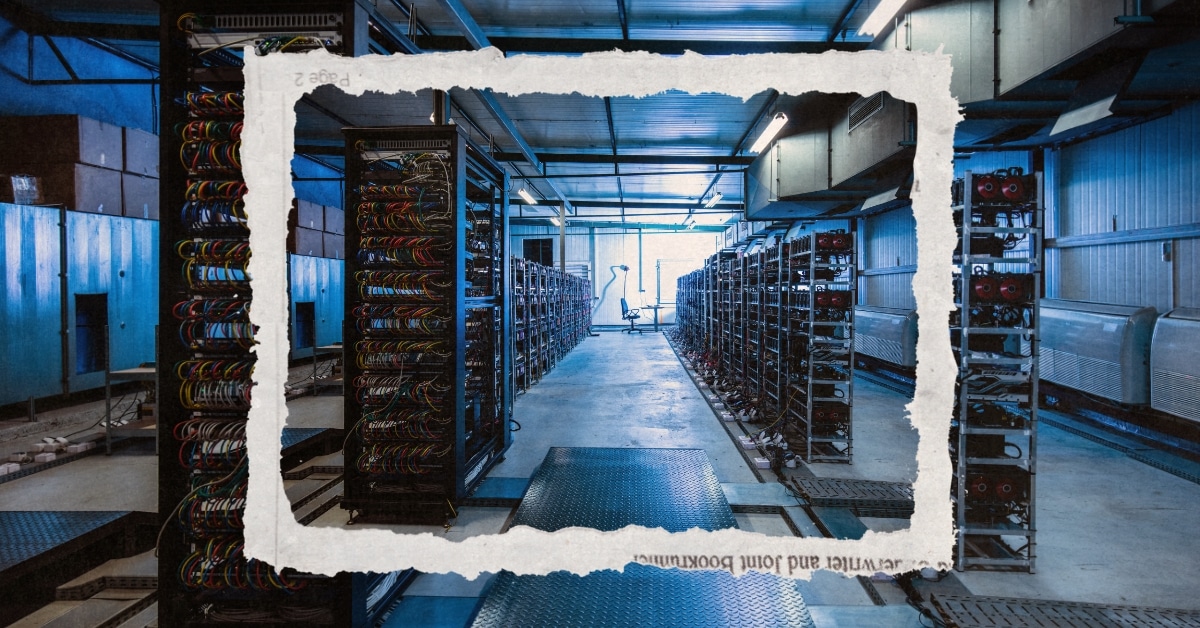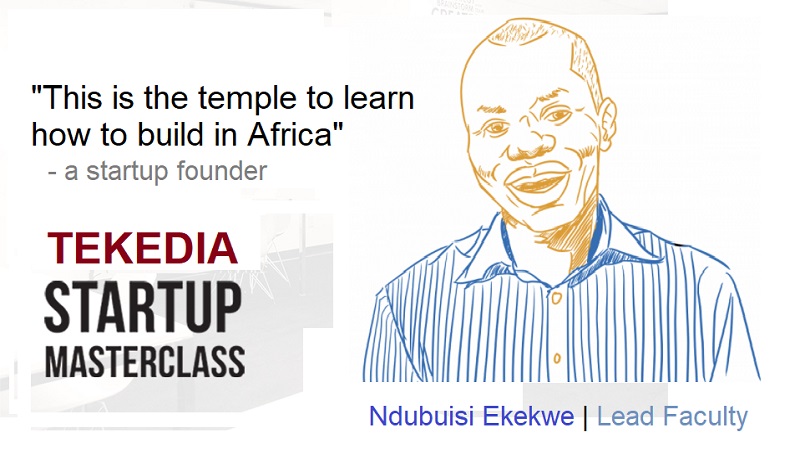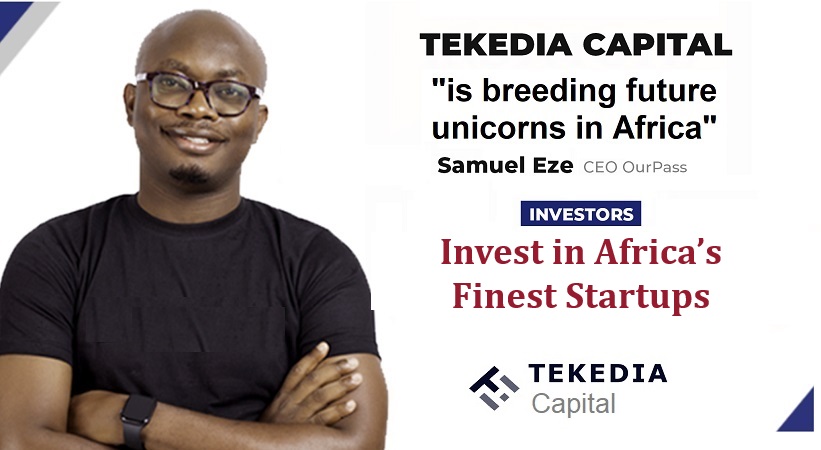News
Daylighting Cryptocurrency’s Waterstreams – Journal #146

Sweat-Powered Equity in the Bathhouse
In Williamsburg, Brooklyn, a sleek wellness center draws a trifecta of well-coiffed influencers, tech bros, and self-care aficionados with its promises of Bitcoin-powered heated soaking pools. Bathhouse, which has branded itself as a futuristic oasis for busy New Yorkers, offers a menu of various hammams, saunas, and pools. Going to Bathhouse means engaging with a sanitized pseudo-spirituality (essential-oil healing sessions are announced by “vibe gong”). So, it makes sense that the owners have supplanted the cultural and spiritual significance of the bathhouse with their own mythological force—proof of work.
The concept of proof of work was first sketched out in 1992 by academics looking to combat the scourge of spam email. Computer scientists Cynthia Dwork and Moni Noar proposed that senders would need to first complete a mathematical puzzle, a digital roadblock that would deter a deluge of mass emails. Deemed too energy intensive, their solution was shelved in favor of spam blockers. The term “proof of work” was later formally coined in a paper by Markus Jakobsson and Ari Juels, titled “Proofs of Work and Bread Pudding Protocols,” which attempted to find alternative tasks to make the energy expenditure useful, and thus less wasteful. The legacy of proof of work returned to the mainstream in 2008 with the now infamous whitepaper “Bitcoin: A Peer-to-Peer Electronic Cash System.” The paper’s anonymous author, whose moniker “Satoshi Nakamoto” became a household name, outlined an economic system that would use blockchain technology to verify and securitize peer-to-peer digital transactions without the interference of government institutions and banks. Following a crypto-anarchist logic, Nakamoto fleshed out a future in which anonymity-protecting technology could render state control of the market impossible.
In this vision, proof of work validates transactions by pitting decentralized “miners,” or computers, against one another to solve complex cryptographic problems. Those who arrive at the solution first are then allowed to add a “block” to the “blockchain.” In verifying the legitimacy of the transaction, the “winner” is then awarded cryptocurrency for their efforts. As a result, the integrity of the currency is directly linked to the capacity for massive amounts of computational labor, a process with immense energy demands.
In a document published to its website, Bathhouse explains how it heats its pools with two ASICs (Application-Specific Integrated Circuit), which are computers designed specifically for Bitcoin mining. Churning below ground, these machines hurtle through energy-intensive math puzzles as a part of the mining process, giving off the byproduct of heat which is then, thanks to the law of conservation of energy, recycled by a heat exchanger into warm water. At first glance, this alchemical process seems like the ultimate hacker fantasy—infrastructure for a decentralized digital currency that doubles as a viable energy source.
When McKenzie Wark wrote A Hacker Manifesto, she positioned hackers as a people on the precipice, a class organized around new modes of production offered by technology and, by extension, their capacity for world building with it. In calling for an end to the myth of scarcity, she underscored the infinities offered through abstraction and the virtual, and the liberatory potential of an alliance between hackers—masters of abstraction—and other workers, farmers, and producers of the world.
In the two decades since the manifesto’s publication, we’ve seen the evolution (or dissolution) of the hacker-as-class, as well as an ushering in of a new world. Wark’s caution against the rise of a “vectoralist class,” a ruling elite determined to control the information produced by the hacker class, has proven prophetic. Some who may have once identified as hackers have stepped into the shoes of the vectoralists, assuming roles of unimaginable power as business moguls, cultural arbiters, and policy shapers. The technologies and worlds this mode of production has midwifed have fundamentally altered our ways of life, a process of transformation that internet historian and writer Ingrid Burrington once likened to terraforming.
Taking stock of the sheer acreage allocated to data centers and the hundreds of thousands of miles of fiber-optic cables crisscrossing the ocean floor, it becomes clear that these infrastructures, essential to the maintenance and upkeep of the current flows of information, are indeed remaking the material environment in the likeness of the computer. A closer look at these infrastructural sites reveals a convergence of material flows—water, electricity, air, heat, metals, minerals, and rare-earth elements—whose combined metabolic processes constitute computing as an ecological force within itself.
Currently, the Williamsburg location of Bathhouse employs twelve miners, or computers, with a hashrate of twelve hundred terrahash. This scale, which resembles most early Bitcoin mining rigs, has the feel of a glorified science-fair project when compared to the commercial crypto mines that have metastasized across the industry. The cost of autonomy doesn’t come cheap. These mines are voracious consumers, guzzling up enough electricity and water to rival the annual consumption rates of entire states and countries. Although Bitcoin is predicated on the infinite, engendered as it is by abstraction, its future is deeply tied up with that of the material resources on which it relies. Here, the abundance of the virtual brushes up against the scarcity that has come to dominate conversations around our environmental future.
To better understand the contradictions of cryptocurrency’s relationship with scarcity, we can look to water, an element with its own misplaced reputation for the infinite. While Bitcoin’s energy consumption has come under increased scrutiny, its water footprint has received less attention despite a snowballing global water crisis. An essential component for most commercial mining operations, water is used in cooling systems to keep machines from overheating as well as indirectly in the power plants that provide energy for mining, using over a thousand gigaliters of water a year. One recent study examining the water consumption of crypto mining estimated that the water footprint of just one Bitcoin transaction was equivalent to that of a small swimming pool.
As it stands, worldwide escalations in drought and flooding due to climate change necessitate a shift in our collective relationships with water. However, Bitcoin mining shows no sign of slowing down. By the time of this article’s publication, Bitcoin will have undergone another halving event, a mechanism in cryptocurrency’s model that reduces the Bitcoin rewarded to miners by half about every four years. Meant to preserve the value of cryptocurrency, halving also means that mining the same amount of Bitcoin will now take double the amount of energy and water as it did previously. Bitcoin boosters are quick to gloss over cryptocurrency’s water costs, a stance in line with the accelerationist slant many adopt in their drive to build out a new financial order. Water, however, operates on its own intrinsic matrices of time and space, ones that often clash with those imposed by systems of commodification.
Greenidge Generation
In urban planning, the term “daylighting” describes the practice of restoring watercourses that have previously been buried due to urbanization. Smelly, dirty, and polluted, these waterways were historically driven underground because they were seen as urban lesions, evidence of industrialization’s environmental toll. In recent years, daylighting has gained popularity not only because of increasing demand from urban populations for recreational green space, but also because of water’s own unruly defiance. In many cases, flooding runs rampant where rivers, streams, and inlets have been built over. Unable to access its natural course, buried water in turn has cost cities millions in damage and destruction. Daylighting, then, might be seen as an instrument of attunement, a means of realigning the built environment and our modes of existence with our ecosystems, a way to reframe notions around water’s (in)sufficiency.
Contextualized within an ever-unfolding hydro-social lineage, the twinned acts of retracing and unearthing required of daylighting might serve as a conceptual framework through which to understand cryptocurrency’s impact on current water politics. In the United States, cryptocurrency mines often find their homes on sites with an inheritance of extraction. Because of the space and the access to energy infrastructure they offer, abandoned or close-to-abandoned coal and natural gas plants are reanimated, their vacant shells finding new purpose in the project of housing and powering energy-guzzling industrial cryptocurrency mines. Many of these are located on geographies with long-held connections to coal, natural gas, and heavy-metal industries.
On the shores of New York’s Seneca Lake, one such mine has found itself at the center of a political maelstrom, as local communities and environmental groups join forces in a campaign against it. Located in a mothballed coal plant, the site was purchased by a private equity firm in 2014, before being converted into a fracked-gas plant. The site drew renewed attention from locals in 2020 when the firm began transforming the facility into a Bitcoin-mining operation. Taking on the name of the coal plant that came before it, Greenidge Generation has made more than $100 million a year mining Bitcoin on over twenty thousand computers.
Public outcry against Greenidge Generation orbits around three central concerns: greenhouse-gas emissions, noise pollution, and the warming of Seneca Lake. Taking advantage of the mine’s location on prime lakeside real estate, every day the facility draws nearly 140 million gallons of water from below the surface of Seneca Lake to cool its computer farm. After it is used, the water is cycled back into the lake. Whereas Bathhouse was able to repurpose the heat emitted by its mining processes into warming its spa facilities, the water discharged back into Seneca Lake is usually nine to thirteen degrees warmer.
Although this temperature differential may seem marginal, activists argue that these higher temperatures will accelerate the lake’s existing problem of toxic cyanobacteria, commonly referred to as harmful algal blooms (HABs). Since 2017, the Finger Lakes, the group of glacially formed lakes that Seneca Lake belongs to, have been plagued by algal blooms, which thrive in warm waters. The effects can be devastating, turning lake waters the murky consistency of pea soup and making drinking and bathing in the water poisonous for both humans and animals. Algal blooms also respire oxygen, which can cause alterations in the lake’s dissolved oxygen levels, causing mass die-offs of the lake’s fish populations.
Seneca Lake is a two-million-year-old body of water that was carved into the earth through the movements of mile-long glaciers during the Ice Age. The longest and deepest of the Finger Lakes, it was a sacred body to local Iroquois, who believed it to be a bottomless expanse safeguarded by an elusive sea monster. Although Greenidge is just a blip in the lake’s timescale, surrounding communities are worried that continued pollution and environmental degradation at the hands of the plant will cause irreversible changes to the lake, infringing on its ability to continue serving as sustenance to life.
Greenidge’s fraught relationship with the lake didn’t just start with Bitcoin mining. The dumping of warm water back into the lake compounds decades of run-off waste pollution from the original coal plant. The legacy of the facility’s coal operations remains even today, with Greenidge earlier this year entering a settlement with the US Environmental Protection Agency to properly dispose of the coal-ash pond on its site.
Bitcoin and the wider mode of production in which it is embedded reproduce existing relationships of extraction, continuing the legacy of exploitative economic systems. The appropriation and thus warping of the hack as it is demonstrated here is perhaps best understood through the lens of what writer and researcher Theodora Dryer calls “settler computing.” Dryer defines settler computing as a “process of appropriating and reformulating space and time through algorithmic systems that reify settler colonial water policy and control.”
Extrapolated to Bitcoin’s model, reliant as it is on unchecked energy and, by extension, water consumption, the framework of settler computing allows us to understand just how the hack might be repurposed, if not weaponized, to reinforce spatial and temporal violence. Perhaps the abstraction of decentralization makes it easier to ignore questions of place. However, while proof of work is celebrated for its ability to optimize and eliminate speed bumps like human error and the risk of trust—sticky vestiges of other economic systems—it is nevertheless designed according to very human settler-colonial ideals around resources and the environment. That Bitcoin is reproducing conditions of scarcity in this case, making Seneca Lake inhospitable to life, is inherent to the design of its algorithm.
Riot USA’s Manifest Destiny
The race to mine Bitcoin has been likened to the Gold Rush. States like Texas, Pennsylvania, and New York have experienced an influx of miners looking to set up shop where energy costs are low, and regulations are almost nonexistent. This pattern has only been exacerbated in recent years by China’s 2021 Bitcoin-mining ban, which sent around 75 percent of the world’s miners packing. With the Bitcoin Gold Rush has come a digital manifest destiny.
Rockdale, Texas is home to not one but two commercial mining enterprises: Riot Platforms, the largest Bitcoin mine in North America; and Bitdeer. Located less than a mile apart, they sit on the site of a former Alcoa aluminum plant. A rustbelt city, Rockdale initially welcomed Bitcoin miners, who promised jobs to a local population that had over the past few decades weathered the collapse of the town’s coal industry, the closure of the aluminum plant, and most recently the bankruptcy of a hospital. In addition to a declining economy and rising poverty rates, faucet water in the town runs rust brown due to outdated and corrosive pipes. Hopeful of more jobs and an influx of cash that might go toward providing clean drinking water, residents initially welcomed cryptominers.
In the years since, however, the town as well as surrounding communities have struggled to make nice with their new neighbors. Unlike Greenidge, the mines don’t produce their own power; rather, they tap into Texas’s already unpredictable electric grid. The state continues to grapple with blackouts, especially during extreme weather. With the promise of generating new economic activity, Bitcoin miners secured a controversial deal with the state, which offers to pay cryptominers in exchange for shutting down their computers during peak electricity demand to avoid overloading power grids. In 2023, during Texas’s hottest summer on record, Riot Platforms earned more government money during the month of August for abstaining from mining than from Bitcoin, netting tens of millions of dollars in public money for power curtailment.
Despite widespread outcry from residents across Texas, Bitcoin’s westward expansion continues. Currently, Riot Platforms is building what would be the world’s largest Bitcoin mine in the city of Corsicana, outside Dallas. The mine is projected to consume up to 1.5 million gallons of water a day for its cooling systems, a worrying statistic for a region facing chronic drought. In recent years, the region has seen heat waves that have dried up water resources and destroyed the local agriculture industry, with farmers losing their crops and ranchers selling their herds due to a lack of access to grazeable land.
With its promise of employment and economic revitalization, and through tax abatements and other government financial incentives, Riot Platforms and its fellow cryptocurrency miners have asserted a right to space, water, and energy in the name of Bitcoin, infringing on the livelihoods of the communities and ecosystems they take hostage. The original Gold Rush of the 1840s was defined by a mentality of biblical conquest and settlers’ divine right to land. While the Bitcoin rush isn’t necessarily ordained by God, its claim to land is rooted in a hacker orthodoxy, one that Richard Barbrook and Andy Cameron define in their canonical 1996 essay, The Californian Ideology, as a bizarre combination of “technological determinism and libertarian individualism.” Here, expansionism is validated through the financial freedom offered by the hack. However, this narrow viewpoint of freedom has its own consequences in its infringement on the human right to water.
Conclusion
Toni Morrison once compared the act of imagining to the Mississippi River’s predilection for flooding: “All water has a perfect memory and is forever trying to get back to where it was.” Here, leakage serves as a persistent archive, a ritual return that refuses burial. If the act of imagining is bound up with memory, as Morrison says, the practice of building new worlds is inextricable from history.
Daylighting Bitcoin’s relationship with water and excavating its negotiations with existing water infrastructures is a broader study in the conditions of water scarcity. However, within postcolonial scholarship, scarcity has been shown to be a construction of colonialism. Scarcity is rooted in an understanding not of what is there but what is missing. Understanding water to be a deficient resource, scarcity is used as an apparatus to validate state intervention in order to manage apportionment, allocation, and optimization. In truth, the water scarcity that Bitcoin augments is one rooted in a history of damming, irrigated commercial agriculture, and colonial water management policies.
Nonetheless, Bitcoin falls short of the possibilities offered within abstraction, leaning on a mode of production that reproduces legacies of extraction. That being said, the failures of Bitcoin should not negate the alternate worlds others are attempting to usher in through the frameworks offered by cryptocurrency. The most obvious example is Ethereum, one of the top traded cryptocurrencies, which in response to proof of work’s environmental toll overhauled its system in 2022 to eliminate mining in exchange for the less energy intensive “proof of stake.”
The more pressing question here is: What is abstraction (and by extension the hack) in a world rapidly remade by climate change—a world that demands a heightened attentiveness to the physical and material? In A Hacker Manifesto Wark writes,
The interest of the hacker class in the production of production, in the abstraction of the world, the expression of the virtuality of nature, can be brought into accord with the needs and interests of nature itself. But this too is only a step toward another history. A history where nature expresses itself as neither object nor subject but at its infinite virtuality.
How can the hack better attune us to, as Wark says, the needs and interests of nature itself?
In a recent essay, eco-technology researcher Austin Wade proposes the blockchain as a way to restore autonomy and agency to nonhuman entities. The idea is “infrastructural animism,” which decenters the human and builds upon Indigenous practices of water and land sovereignty. Already, within the legal landscape, Indigenous-led rights-of-nature movements have sought to create policy that would protect the autonomy of rivers and forests. For example, movements in New Zealand and Canada have fought for the right to personhood of natural entities.
Wade asks: What would it look like if instead of proof of work, we had “proof of rehydration,” where stewards, rather than “miners,” are awarded credits for infrastructural projects that aid in the replenishment of aquifers? Or proof of habitat restoration? The system would employ sensing technologies that tie the distribution and value of ecoCredits or currency to the ecological health of the entity. By reconfiguring bodies of water into what Wade calls “ecological institutions,” decentralized protocols might be used to foster new modes of identity, governance, and coexistence. In restoring agency to nonhuman identities, we might shift our frameworks away from scarcity to those of livingness.
Perhaps, then, abstraction offers a way for us to come closer to nature. Rather than alienating us from one another and our environments, virtuality provides new means for communing with the more-than-human world. Centering ideas of reciprocity and regeneration, rather than domination and extraction, carries the promise of more porous technologies—ones that can adapt and account for the aforementioned leakages and the histories they carry.
News
US Cryptocurrency Rules Delayed by ‘Never-Ending’ Lawsuits

Ripple CEO says cryptocurrency industry still seeking regulatory clarity from US
Speaking to Bloomberg News on Wednesday (July 17), Author: Brad Garlinghouse he said America is behind behind other countries which have already adopted cryptocurrency regulations.
“What we’re seeing, where it’s the UK, Japan, Singapore… even the European Union, more than two dozen countries have come together to provide a framework for cryptocurrency regulation,” Garlinghouse said.
“It’s frustrating that we as a country can’t get that regulatory framework in place. And instead, we have this never-ending lawsuit coming from the SEC that doesn’t really address the problem.”
Ripple has been the target of some of these legal disputes. Securities and Exchange Commission (SEC) sued the company in 2020, accusing it of conducting a $1.3 billion operation offering of unregistered securities tied to its XRP token.
However, last year a judge ruled that only Ripple’s institutional sales of XRP, not retail sales, violated the law, a decision widely seen as a victory for the cryptocurrency industry.
As PYMNTS noted at the time, that ruling has “far-reaching repercussions impact across the digital asset ecosystem, which has long maintained that its tokens do not represent securities contracts.”
However, Garlinghouse told Bloomberg on Wednesday that the company cannot wage multimillion-dollar legal battles over each token.
He spoke to the news agency from the Republican National Convention in Milwaukee, where the party is backing the candidacies of former President Donald Trump and Ohio Sen. J.D. Vance, both of whom are considered pro-cryptocurrency.
But Garlinghouse argued that cryptocurrencies “should not be a partisan issue,” and noted that he had recently attended a conference in Washington that included Democrats, including White House officials.
“I think they were there, listening to the industry… it was refreshing to start having that conversation,” she said.
President Joe Biden earlier this year he vetoed a measure which would have ended the SEC’s special rules for crypto-asset custodians. This legislation was supported by both the digital asset industry and the banking industry.
Ripple early this year donated $25 million to the cryptocurrency industry’s super PAC Fair Smoothiewith Garlinghouse stating at the time that such donations would continue every year, as long as the industry had its detractors.
Second Open SecretsWhich monitor spending For campaigns, the PAC has spent $13.4 million this year, much of it to help defeat Rep. Katie Porter’s (D-Calif.) U.S. Senate campaign.
News
The Future of Cybersecurity in the Cryptocurrency Industry

The cryptocurrency space has had a tumultuous journey, with its fair share of ups and downs. As we look to the future, one area that remains a constant focus is cybersecurity. The digital nature of cryptocurrencies makes them inherently vulnerable to cyber threats, and as the industry evolves, so does the landscape of potential risks.
In 2022, the cryptocurrency market faced significant challenges, with over $2 trillion in market value lost. This event served as a wake-up call for the industry, highlighting the need for robust cybersecurity measures. The future of cryptocurrency security is expected to see a shift towards more regulated and established institutions taking the reins of crypto technology and blockchain infrastructure.
The decentralized nature of cryptocurrencies offers numerous benefits, such as transparency and financial inclusion. However, it also introduces unique security challenges. The risk landscape is filled with threats such as hacking, phishing, ransomware attacks, malware, and social engineering. These threats not only lead to financial losses, but also damage the reputation and trust within the cryptocurrency ecosystem.
Mini-MBA Tekedia edition 15 ((September 9 – December 7, 2024) started recordings; Register today for discounts reserved for early bird customers.
Tekedia AI in Business Masterclass Opens registrations Here.
Join the Tekedia Capital Syndicate and IInvest in Africa’s best startups Here.
The decentralized nature of cryptocurrencies offers many benefits, but it also presents unique security challenges. Cyber risks such as hacking, phishing, and ransomware pose threats to the integrity of digital assets. The infrastructure that supports cryptocurrencies is not immune to vulnerabilities, including smart contract flaws and exchange hacks.
To address these vulnerabilities, the infrastructure that supports cryptocurrencies must be strengthened. Smart contract vulnerabilities, exchange hacks, wallet breaches, and flaws in the underlying blockchain technology are significant concerns that must be addressed to ensure the security and integrity of digital assets.
As cybercriminal tactics and techniques become more sophisticated, the cryptocurrency industry must stay ahead of the curve. The future will likely see more targeted attacks, exploiting weaknesses in infrastructure, networks, and human factors. This requires a proactive and multifaceted approach to cybersecurity.
To mitigate these risks, several measures must be adopted:
Strengthening security measures: Developers, exchanges, and wallet providers must improve security protocols, use strong encryption, implement multi-factor authentication, and conduct regular security audits.
Education and awareness: Users should be educated on best practices for protecting their digital assets, including using strong passwords, recognizing phishing attempts, and using hardware wallets for secure storage.
Looking ahead, the cryptocurrency industry is expected to see an increased focus on robust security measures. Blockchain projects and exchanges are likely to invest in advanced encryption techniques and decentralized storage solutions to protect user assets. The future impact of cyber risk on cryptocurrencies will depend on the collective efforts of stakeholders to address vulnerabilities and strengthen security measures.
Collective efforts by stakeholders in the cryptocurrency space are crucial to address vulnerabilities and strengthen security measures. While challenges persist, advances in cybersecurity technologies and practices offer hope for a more secure and resilient cryptocurrency ecosystem.
The future of cybersecurity in the cryptocurrency industry depends on finding a balance between innovation and regulation. It requires a collaborative effort from all parties involved, from developers to end users, to create a secure environment that fosters trust and growth in the industry. As we move forward, it is critical that lessons learned from past events guide the development of stronger security measures, ensuring the longevity and stability of cryptocurrencies as a vital part of the modern economic toolkit.
Like this:
Like Loading…
News
Bullish XRP and RLBK price predictions rise, outpacing the broader cryptocurrency market, prompting Shiba Inu holders to switch!

Bitcoin’s one-week surge from $60,000 has pushed other cryptocurrencies into an uptrend. However, for many altcoins, this trend has been temporary. Altcoins such as XRP and Shiba Inu (SHIB) have experienced price drops. However, Rollblock, a new altcoin on the Ethereum blockchain, has thrived during this period, attracting thousands of investors looking for long-term growth.
XRP’s Nearly 30% Growth Over Last Week Drops as Selling Pressure Increases
XRP is seeing further price decline as Ripple investors withdraw their profits from the token. The surge in XRP’s price to $0.64 in the past week has provided investors with a perfect opportunity to increase their returns in the short term. With the ongoing sell-off in XRP, XRP has jumped over 8% in the past day and is now trading at $0.59. However, analysts tracking XRP indicators predict that XRP could still extend its gains by over 30% in the coming weeks.
Shiba Inu (SHIB) marks its third consecutive day of losses
Shiba Inu (SHIB) is in a period of adjustment after a week of strong gains. In the last 24 hours, SHIB has seen a jump of over 7%, reflecting a natural market fluctuation. Analysts are observing a death cross on the Shiba Inu chart, which historically signals the potential for future opportunities as the market stabilizes. As investors explore new possibilities, some are diversifying into promising altcoins like Rollblock (RBLK) to strategically rebalance their portfolios and capitalize on the emerging trend.
Rollblock (RBLK) Up Another 7% as New Investors Join Pre-Sale
Rollblock (RBLK) has taken the cryptocurrency market by storm, having attracted investors from more popular altcoins like Shiba Inu (SHIB) and XRP. Rollblock’s growth is attributed to its utility in the $450 billion global gaming industry.
Rollblock aims to use blockchain technology to bridge the gap between centralized and decentralized gambling. With blockchain technology, Rollblock secures every transaction in its online casino, providing transparency and convenience to millions of players who are uncomfortable placing bets on other iGaming platforms.
This innovative use of blockchain technology in the industry has grown Rollblock to over 4,000 new users in less than two months. With plans to add sports betting, this number is expected to grow exponentially in Q3.
Rollblock uses a revenue sharing model that splits up to 30% of its casino’s weekly profits with token holders. This happens after Rollblock buys back $RBLK from the open market and uses half of it for rewards. The other half is burned to increase the price of $RBLK.
Rollblock price has seen four increases in the past month with $RBLK tokens now selling for $0.017. Analysts predict that at the current growth rate, Rollblock could increase by over 800% before the presale ends. For investors looking for a long-term token with growth potential, phase four is the best time to buy Rollblock before its price skyrockets!
Discover the exciting Rollblock (RBLK) pre-sale opportunities now!
Website:https://Rollblockpresale.io/
Social: https://linktr.ee/Rollblockcasino
No spam, no lies, just insights. You can unsubscribe at any time.
News
Texas Crypto Miners Turn to AI as Crypto Declines

As cryptocurrency mining becomes less profitable, Texas cryptocurrency mining companies are switching to supporting artificial intelligence companies.
Bitcoin miners, with their sprawling data centers and access to significant energy resources, are ideally suited for computationally intensive AI operations, and as cryptocurrency mining becomes less profitable, companies see this shift as a logical answer to their problems.
On Thursday, Houston-based Lancium and Denver-based Crusoe Energy Systems announced a multibillion-dollar deal to build a 200-megawatt data center near the West Texas city of Abilene to support advanced artificial intelligence applications such as medical research and aircraft design, CNBC reported. The plant represents the first phase of a larger 1.2 gigawatt project.
Lancium and Crusoe’s move into AI mirrors a broader trend among bitcoin miners. The combined market capitalization of the top U.S.-listed bitcoin miners hit a record $22.8 billion in June. Companies like Bit Digital and Hut 8 are diversifying into AI, with Bit Digital securing a $92 million annual revenue deal to supply Nvidia GPUs and Hut 8 raising $150 million to expand its AI data center.
But the growing popularity of these operations also presents challenges, particularly for the Texas power grid. Last month, the Electric Reliability Council of Texas announced that the state is expected to nearly double its energy production by 2030 to meet the high energy demands of data centers and cryptocurrency operations.
Lieutenant Governor Dan Patrick expressed concern about the projections.
“Cryptocurrency miners and data centers will account for more than 50% of the additional growth. We need to take a close look at these two sectors,” He wrote on Twitter/X. “They produce very few jobs compared to the incredible demands they place on our network. Cryptocurrency miners could actually make more money selling electricity to the network than they do from their cryptocurrency mining operations.”
Analysts predict significant growth in data center power capacity, which is expected to account for up to 9% of U.S. electricity consumption by 2030.
The operations also pose challenges for nearby cities. Earlier this month, TIME reported that a crypto-mining facility was seriously compromising the health of residents in the city of Granbury. TIME reported more than 40 people with serious health problems, including cardiovascular disease, high blood pressure and hearing loss. At least 10 of the residents needed to go to the emergency room or an urgent care facility.
The disturbances were caused by the extreme noise generated by the crypto-mining facility’s fans, which are used to keep the machines cool. While the proposed data center in Abilene would use liquid cooling systems, it’s still unclear whether the facility’s operations would pose a health risk to local residents.
-

 Nfts1 year ago
Nfts1 year agoShardLab Launches ZK-Based Tool for Digital Identity and NFT Vouchers
-

 News1 year ago
News1 year agoWallet recovery firms are abuzz as stranded cryptocurrency investors panic in the bitcoin boom
-

 Bitcoin12 months ago
Bitcoin12 months agoBitcoin, Ethereum, Solana and Cryptocurrency Markets Look Ready to ‘Send’ as Stars Align, According to Investor Chris Burniske
-

 Altcoins12 months ago
Altcoins12 months agoThree Altcoins Poised for Significant Growth in 2024: ETFS, OP, BLAST
-

 Altcoins12 months ago
Altcoins12 months agoAccumulate these altcoins now for maximum gains
-

 Nfts12 months ago
Nfts12 months agoOG Crypto Artist Trevor Jones Unveils Groundbreaking Collection of Ordinals | NFT CULTURE | NFT News | Web3 Culture
-

 Bitcoin12 months ago
Bitcoin12 months agoBillionaires are selling Nvidia stock and buying an index fund that could rise as much as 5,655%, according to some Wall Street analysts
-

 Videos8 months ago
Videos8 months agoKamala just won the boner! [Bad For Crypto]
-

 Videos1 year ago
Videos1 year agoLIVE FOMC 🚨 Could be CATASTROPHIC for Altcoins!
-

 Videos1 year ago
Videos1 year agoAttention: a historically significant BITCOIN signal has just appeared!
-

 News1 year ago
News1 year agoA Guide for Newcomers & Beginners – Forbes Advisor
-

 Videos1 year ago
Videos1 year agoSTOCK MARKET FUD! ⚠️ [Why This Is GREAT For Bitcoin Traders!]







